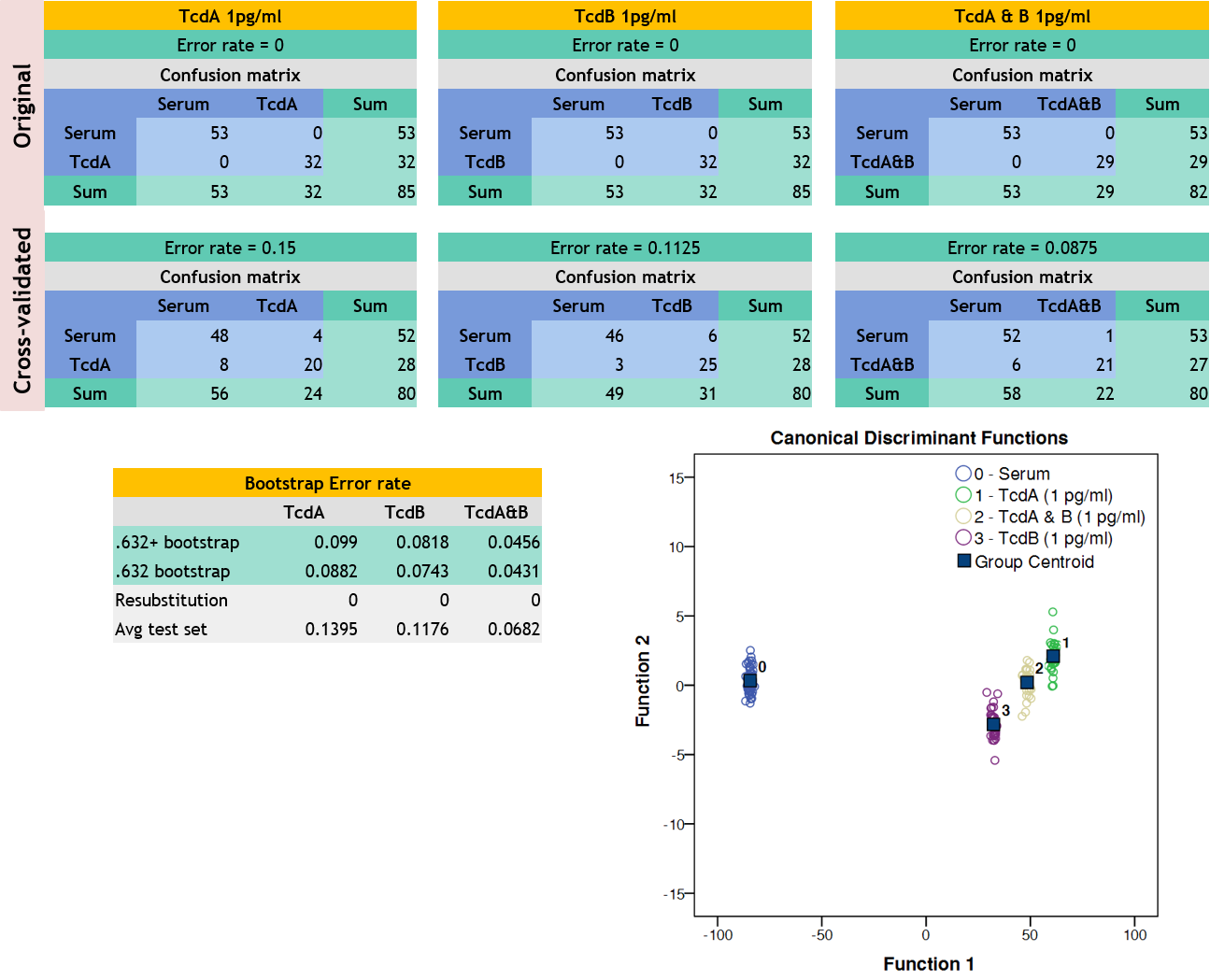S. Koya1, J. V. Martin2, S. Yurgelevic1, D. M. Liberati2, M. Brusatori1, C. Huang1, G. W. Auner1, L. N. Diebel2 1Wayne State University,Smart Sensors And Integrated Microsystems (SSIM)/ Michael And Marian Ilitch Department Of Surgery/School Of Medicine,Detroit, MI, USA 2Wayne State University,Michael And Marian Ilitch Department Of Surgery/School Of Medicine,Detroit, MI, USA
Introduction:
Clostridium difficile infection (CDI) is due to the effects of toxins, toxin A (TcdA) and toxin B (TcdB) on the host. Severe CDI is associated with systemic signs of infection. Animal models of CDI demonstrate a strong correlation between systemic toxemia and the occurrence of severe disease. However current technologies have low sensitivity to detect C. difficile toxemia in human subjects. Raman spectroscopy (RS) is an upcoming technology that is used to detect bacteria and their toxins. We speculate that RS may be a sensitive method to detect clinically relevant concentrations of C. difficile toxins in serum.
Methods:
Serum samples were spiked with varying concentrations of TcdA, TcdB and both. RS was performed on air dried serum drop on a mirror polished stainless-steel slide. Raman spectra were obtained, background corrected, vector normalized and analyzed by Partial Least Square Linear Discriminant Analysis (PLS-LDA). PLS-LDA model accuracy was measured by cross-validation and bootstrap method.
Results:
At 1 pg/ml concentration, toxin spiked serum was distinguished from control serum 100%. PLS-LDA model performed well with cross-validated error rate ranging from 8 to 15% and bootstrap error rate ranging from 4 to 9%. Similar results were obtained for other concentrations of toxins (100 pg/ml, 1 ng/ml).
Conclusion:
Raman spectroscopy has the potential to rapidly detect C. difficile toxins in serum at clinically relevant concentrations and may be useful as a diagnostic tool to modify therapy and and predict outcome in critically ill CDI patients.
